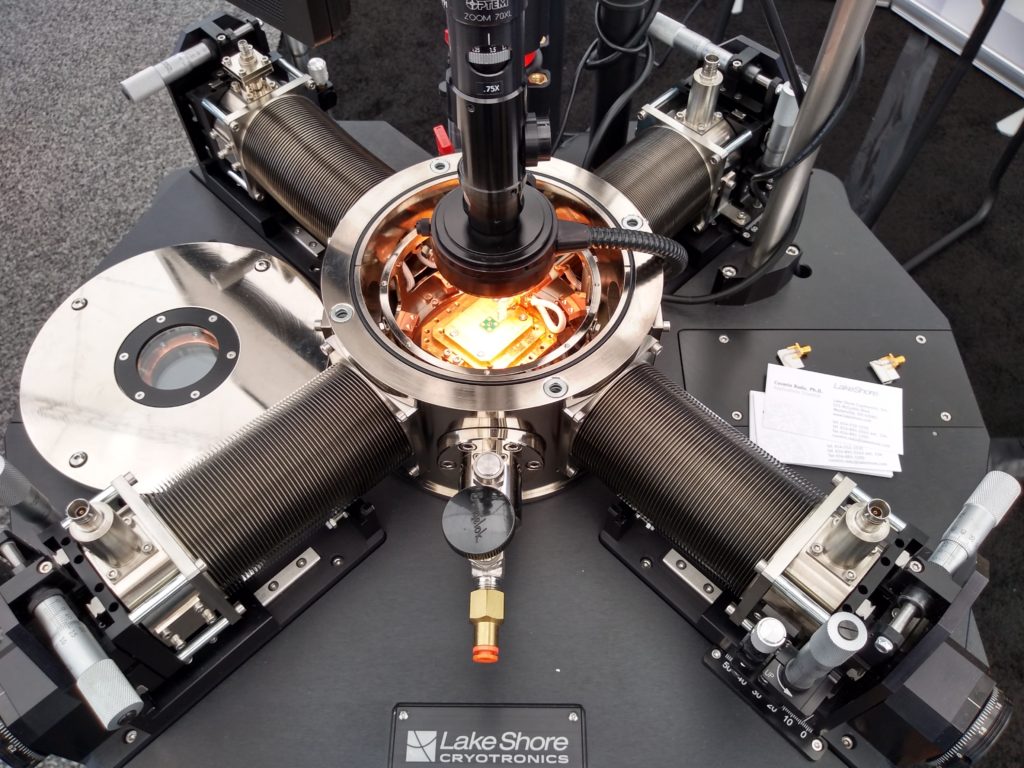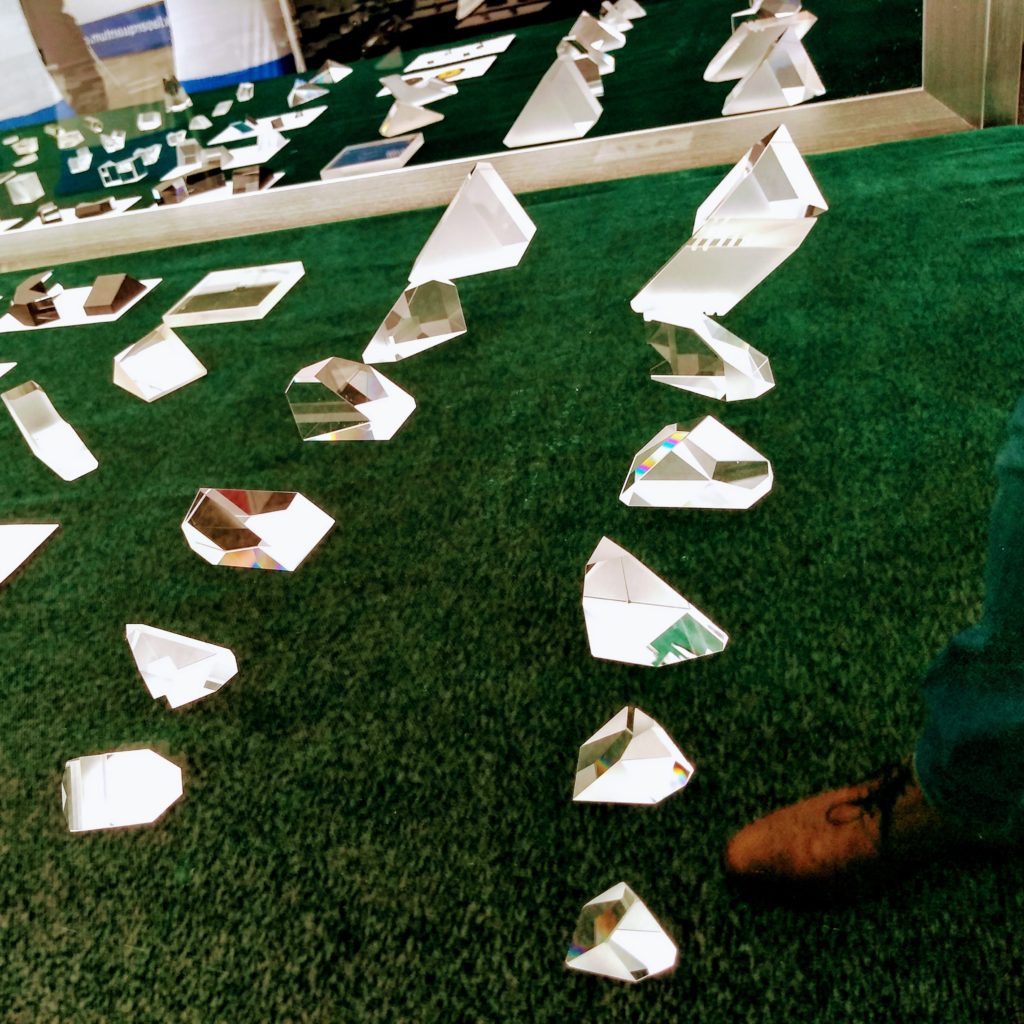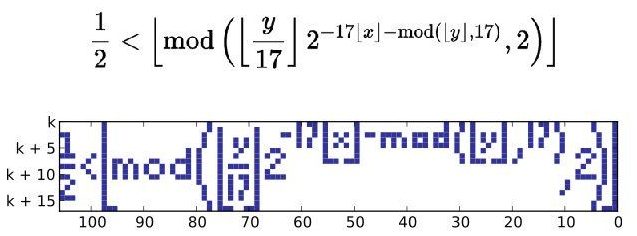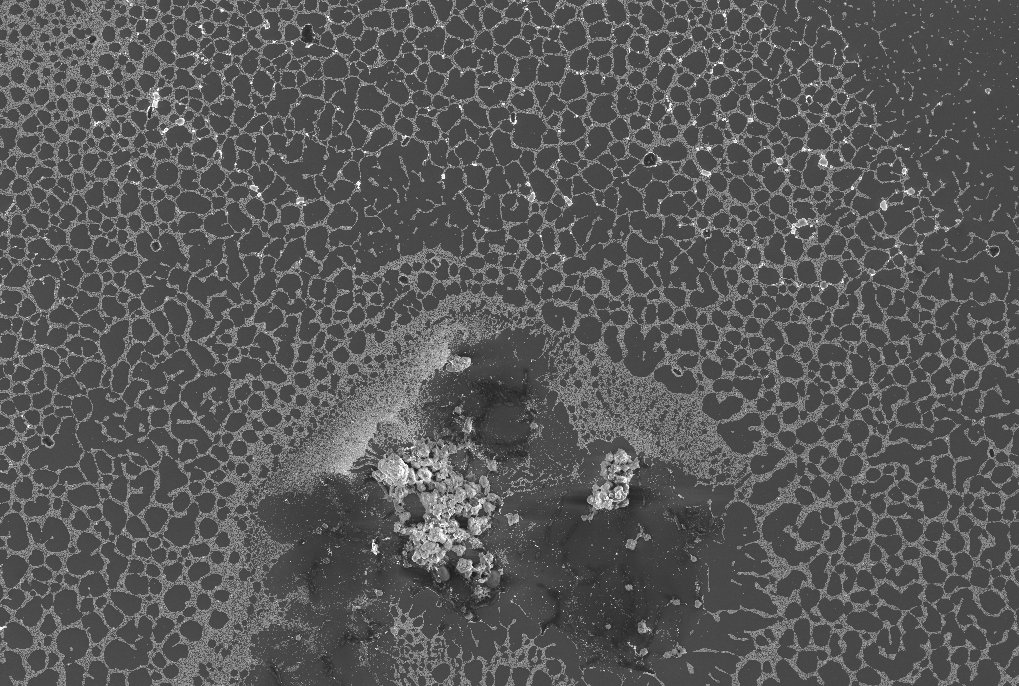Here are collected pictures from the vendor exhibition at the SPIE Optics+Photonics 2019 conference in San Diego, CA.
I always find these exhibitions strangely fascinating, and I wanted to capture why. Enjoy!


Continue reading
Here are collected pictures from the vendor exhibition at the SPIE Optics+Photonics 2019 conference in San Diego, CA.
I always find these exhibitions strangely fascinating, and I wanted to capture why. Enjoy!


Somehow my art piece has been accepted! A delightful play on the wavelike behavior of light, and the particle0like behavior of silicon atoms, in a tribute to Malevich. Instant Classic!
You can now see it at the Vision+Light exhibition on Berkeley Campus, from February 20th to March 14th, 2019
I was much impressed by a remark of Aldous Huxley, that we owe our civilization largely to the fact that vision is an objective sense. An animal with an olfactory sense or with hearing, however well developed, could never have created science. A smell is either good or bad, and even hearing is never entirely neutral; music can convey emotions with an immediateness of which the sober visual arts are inca pable. No wonder that the very word “objective” has been appropriated by optics.
Dennis Gabor – Light and Information
 Astronomy is an obvious domain where picture are breathtaking, but more so is space imaging.
Astronomy is an obvious domain where picture are breathtaking, but more so is space imaging.This is a continuation of a series of blog posts, written mostly in French, about arts and science
In the past few years, we’ve seen the emergence of Deep Neural Networks (DNN), and the latest developments are Generative Adverserial Networks (GAN), where the goal is to pit two neural networks against each other so that they find the best way to generate an object from a label or a simple drawing, or mimick the style of an artist.The first ripple in the vast ocean of possibility was Deep Dream, though it wasn’t technically a GAN: Now, things have evolved even more, and you can not only generate trippy videos, but also use neural network to emulate the style of an artist and generate from scratch content that is indeed appealing! Continue readingSelf-reference is cornerstone in Hofstadter’s Godel-Escher-Bach, a must read book for anyone interested in logic (and we shall rely logic in these days to stay sane.)
Here’s a bunch of examples of self-reference that I found interesting, curated just for you!Barber’s paradox:The barber is the “one who shaves all those, and those only, who do not shave themselves.” The question is, does the barber shave himself?
Self-referential figure (via xkcd):
 Tupper’s formula that prints itself on a screen (via Brett Richardson)
Tupper’s formula that prints itself on a screen (via Brett Richardson) Continue reading
Continue reading
My father is an artist, and he recently spent a few weeks in Berkeley, where he had the chance to paint. Since painting on a canvas is boring, I thought he could try to paint on pieces of silicon wafer, which are the principal component for the fabrication of microprocessors, and indeed he did:
I was able to salvage an EUV photomask from my lab, which is basically the gold master for engraving these microchips. These surface are extremely precise (down to the atomic level), yet the paint stuck:
There’s also a swath of art in-silico, not too far from David Hockney’s iPad paintings.
Happy birthday dad!
(some of his artwork is available here: romain.wojdyla.fr.)I had the chance to help my friend Sylvie to get scanning electron microscope pictures of the MRI contrast agent she synthesizes, and we collected gorgeous data thanks to my colleague Farhad.
He told me that he had TONS of failed experiments that still yielded great pictures…
We should start a journal of the failed experiments… art+science mag !:)

SEM picture that looks like an aerial view of Dog Island (Anguilla)…
I guess there is some wabi-sabi in science…
Continue readingHi peeps,
Today, I had the chance to be there for a talk given by Steven Chu.
Two Nobel Prize winners in the same frame (Chu and Smoot), taken from an handheld smartphone.
And the lab director, Paul Alivisatos
As usual, I’ve asked him a for a drawing.
Since he did a lot of work on laser cooling, I asked him for a “cool atom” :
Since Paul Alivisatos was around, I also asked him for a contribution.
I thought a quantum dot would do the work !
Cela fait longtemps que
1) je n’ai pas écrit en français
2) je n’ai pas ajouté de matériel nouveau sur l’Art et la Science.
 Continue reading
Continue reading